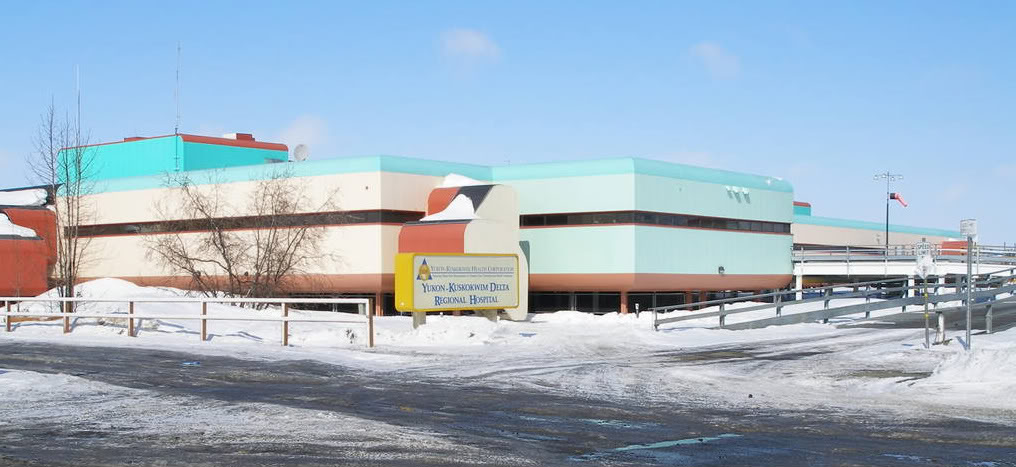Alaska region’s success at reducing STD rates offers lessons for other Arctic regions
So-called “expedited partner therapy” — quickly identifying and treating both infected patients and their sexual partners — had a dramatic impact in curbing gonorrhea in one Alaska region.

As rates of sexually transmitted diseases spike across Alaska and the Arctic, one Alaska region has taken a new public health approach to reverse the trend.
The Yukon-Kuskokwim Delta region of southwestern Alaska, which encompasses 58 mostly Yupik communities, has used “expedited partner therapy” — the quick identification and treatment of infected patients’ sexual partners — and other methods to dramatically reduce gonorrhea rates, the Alaska Department of Health and Social Services reported.
The region’s experience, described in a May 29 bulletin issued by the department’s epidemiology section, could be an example for the rest of the state and other far northern regions, said Susan Jones, the epidemiology program manager for sexually transmitted diseases and HIV.
“We can learn from each other,” she said.
In the Yukon-Kuskokwim region, where gonorrhea rates in the region have been the highest in Alaska. In 2010, they peaked at 1,316 cases per 100,000, about nine times the national U.S. rate posted in 2015 and 2016, according to the epidemiology section.
That extremely high rate of infection spurred community action. “What they did is essentially set up a task force in their community to address it,” Jones said.
Through the Yukon-Kuskokwim Health Corporation, which serves the 58,000-square-mile region, the community group established a public education system, ensured that medications were premixed and readily available at village clinics and emergency rooms in even very rural areas and ensured that diagnosed patients get follow-up care. A key part of the follow-up care was tracing patients’ sexual contacts and providing medication for those people, the epidemiology bulletin said.
By 2015, rates of gonorrhea infection in the region had fallen to 390 cases per 100,000, still above the state average but a significant improvement, the bulletin said.
An important lesson, Jones said, is that quick action is needed. “Infected persons have to get treated right away and partners IDed and treated,” she said. Patients need to be forthcoming about identifying partners and types of sexual activity, she said, and health-care providers need to collect that information. “So everyone has to kind of do their part,” she said.
The Yukon-Kuskokwim region’s experience with high rates of gonorrhea is part of an Arctic pattern.
In the early 2000s, rates of chlamydia, another sexually transmitted disease, were very high and on the rise in Alaska, Canada’s northern territories and Greenland, according to a study published in the journal Emerging Infectious Diseases. Rates in the northern territories of Canada were about eight times as high as those in that nation as a whole; rates in Greenland were also about eight times as high as those in Denmark, that 2008 study found.
In Greenland, rates of syphilis jumped from no recorded cases in 2010 to 85.3 per 100,000 in 2014; that compares to a 6.25 per 100,000 incidence rate in Denmark, according to a study published in 2015 in the International Journal of Circumpolar Health.
Gonorrhea rates in Greenland have increased substantially, according to a study published last year in the International Journal of Circumpolar Health. There were 1,550 new cases reported in 2014 in Greenland, a rate of 2,754 per 100,000, compared to a rate of 915 per 100,000 in 2005, the study said.
To address sexually transmitted diseases, Alaska health officials have worked in the past with those from Canada and elsewhere in the Arctic, Jones said. “We have shared information and we look to each other for support,” she said.
Currently, Alaska is coping with a big upswing in syphilis infections, Jones said. As of May, the number of cases reported this year have already exceeded the total for 2017, she said.
Statewide, Alaska is also experiencing a big increase in gonorrhea infections. There were 2,190 reported cases in 2017, a rate of 297 per 100,000 and a 51 percent increase from 2016, said a separate epidemiology bulletin issued on May 24.
As to why rates of gonorrhea and other sexually transmitted infections are so high in Alaska, especially in rural areas, there are several potential contributing factors, Jones said.
Alaska’s demographics is one, she said. “We have a young population, so that would be translated to more sexual activity,” she said. Elsewhere in the Arctic the populations are relatively young as well, she noted.
Another factor, in Alaska and across the United States, where rates are also rising, could be the improved diagnostic technology, which is better at identifying cases than what was used in the past, Jones said.